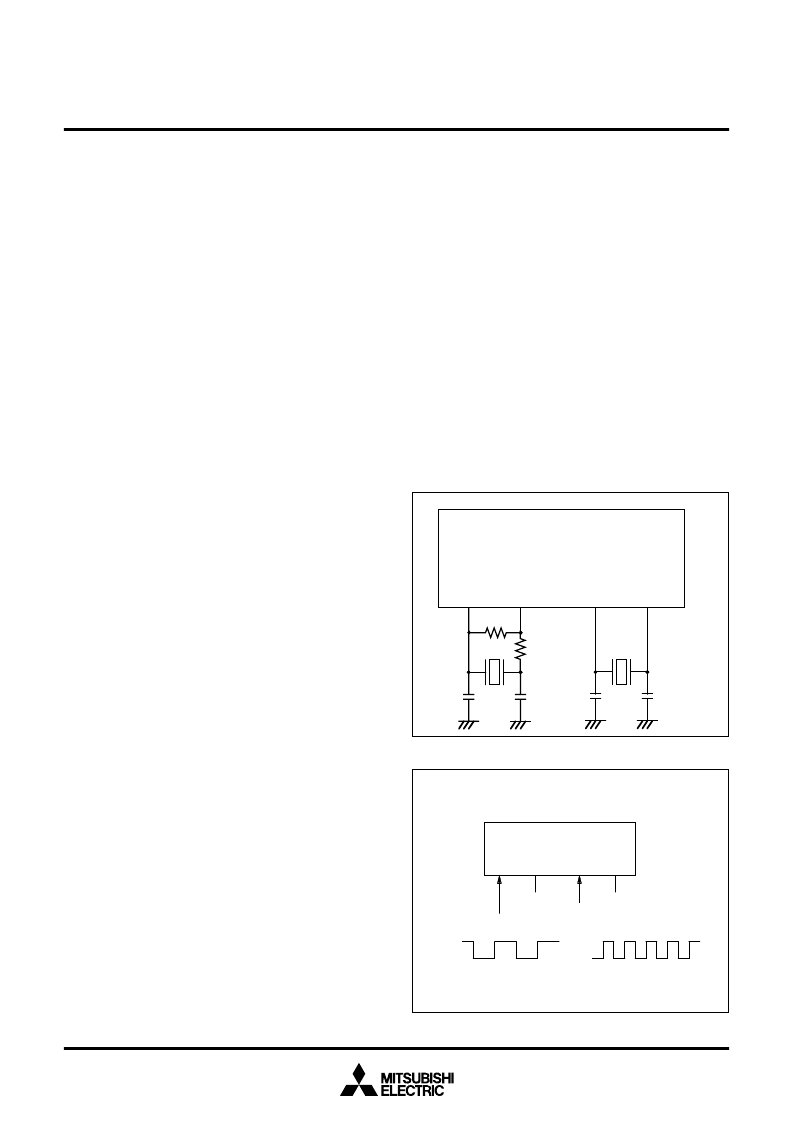- 您現(xiàn)在的位置:買賣IC網(wǎng) > PDF目錄370957 > M38B49EBH-XXXXFP (Mitsubishi Electric Corporation) SINGLE-CHIP 8-BIT CMOS MICROCOMPUTER PDF資料下載
參數(shù)資料
| 型號(hào): | M38B49EBH-XXXXFP |
| 廠商: | Mitsubishi Electric Corporation |
| 英文描述: | SINGLE-CHIP 8-BIT CMOS MICROCOMPUTER |
| 中文描述: | 單芯片8位CMOS微機(jī) |
| 文件頁(yè)數(shù): | 61/78頁(yè) |
| 文件大小: | 1214K |
| 代理商: | M38B49EBH-XXXXFP |
第1頁(yè)第2頁(yè)第3頁(yè)第4頁(yè)第5頁(yè)第6頁(yè)第7頁(yè)第8頁(yè)第9頁(yè)第10頁(yè)第11頁(yè)第12頁(yè)第13頁(yè)第14頁(yè)第15頁(yè)第16頁(yè)第17頁(yè)第18頁(yè)第19頁(yè)第20頁(yè)第21頁(yè)第22頁(yè)第23頁(yè)第24頁(yè)第25頁(yè)第26頁(yè)第27頁(yè)第28頁(yè)第29頁(yè)第30頁(yè)第31頁(yè)第32頁(yè)第33頁(yè)第34頁(yè)第35頁(yè)第36頁(yè)第37頁(yè)第38頁(yè)第39頁(yè)第40頁(yè)第41頁(yè)第42頁(yè)第43頁(yè)第44頁(yè)第45頁(yè)第46頁(yè)第47頁(yè)第48頁(yè)第49頁(yè)第50頁(yè)第51頁(yè)第52頁(yè)第53頁(yè)第54頁(yè)第55頁(yè)第56頁(yè)第57頁(yè)第58頁(yè)第59頁(yè)第60頁(yè)當(dāng)前第61頁(yè)第62頁(yè)第63頁(yè)第64頁(yè)第65頁(yè)第66頁(yè)第67頁(yè)第68頁(yè)第69頁(yè)第70頁(yè)第71頁(yè)第72頁(yè)第73頁(yè)第74頁(yè)第75頁(yè)第76頁(yè)第77頁(yè)第78頁(yè)

61
38B4 Group
SINGLE-CHIP 8-BIT CMOS MICROCOMPUTER
MITSUBISHI MICROCOMPUTERS
CLOCK GENERATING CIRCUIT
The 38B4 group has two built-in oscillation circuits. An oscillation
circuit can be formed by connecting a resonator between X
IN
and
X
OUT
(X
CIN
and X
COUT
). Use the circuit constants in accordance with
the resonator manufacturer’s recommended values. No
external resistor is needed between X
IN
and X
OUT
since a feedback
resistor exists on-chip. However, an external feedback resistor is
needed between X
CIN
and X
COUT
.
Immediately after power on, only the X
IN
oscillation circuit starts
oscillating, and X
CIN
and X
COUT
pins function as I/O ports.
Frequency Control
(1) Middle-speed mode
The internal system clock is the frequency of X
IN
divided by 4. After
reset, this mode is selected.
(2) High-speed mode
The internal system clock is the frequency of X
IN
.
(3) Low-speed mode
The internal system clock is the frequency of X
CIN
divided by 2.
I
Note
If you switch the mode between middle/high-speed and low-speed,
stabilize both X
IN
and X
CIN
oscillations. The sufficient time is required
for the sub clock to stabilize, especially immediately after power on
and at returning from stop mode. When switching the mode between
middle/high-speed and low-speed, set the frequency on condition
that f(X
IN
) > 3f(X
CIN
).
(4) Low power consumption mode
The low power consumption operation can be realized by stopping
the main clock X
IN
in low-speed mode. To stop the main clock, set bit
5 of the CPU mode register to “1”. When the main clock X
IN
is re-
started (by setting the main clock stop bit to “0”), set enough time for
oscillation to stabilize.
By clearing furthermore the X
COUT
drivability selection bit (b3) of CPU
mode register to “0”, low power consumption operation of less than
200 μA (f(X
CIN
) = 32 kHz) can be realized by reducing the drivability
between X
CIN
and X
COUT
. At reset or during STP instruction execu-
tion this bit is set to “1” and a strong drivability that has an easy
oscillation start is set.
Oscillation Control
(1) Stop mode
If the STP instruction is executed, the internal system clock stops at
an “H” level, and X
IN
and X
CIN
oscillators stop. Timer 1 is set to “FF
16
”
and timer 2 is set to “01
16
”.
Either X
IN
divided by 8 or X
CIN
divided by 16 is input to timer 1 as
count source, and the output of timer 1 is connected to timer 2. The
bits of the timer 12 mode register are cleared to “0”. Set the interrupt
enable bits of the timer 1 and timer 2 to disabled (“0”) before execut-
ing the STP instruction. Oscillator restarts when an external interrupt
is received or reset, but the internal system clock is not supplied to
the CPU until timer 1 underflows. This allows time for the clock cir-
cuit oscillation to stabilize.
(2) Wait mode
If the WIT instruction is executed, the internal system clock stops at
an “H” level. The states of X
IN
and X
CIN
are the same as the state
before executing the WIT instruction. The internal system clock re-
starts at reset or when an interrupt is received. Since the oscillator
does not stop, normal operation can be started immediately after the
clock is restarted.
Fig. 71 Ceramic resonator circuit
Fig. 72 External clock input circuit
X
C
I
N
X
C
O
U
T
X
I
N
X
O
U
T
C
I
N
C
O
U
T
C
C
I
N
C
C
O
U
T
R
f
R
d
X
I
N
X
O
U
T
E
t
x
t
e
r
n
a
l
o
s
c
i
l
l
a
t
i
o
n
c
i
r
c
u
i
t
V
C
C
V
S
S
o
p
e
n
X
C
I
N
X
C
O
U
T
E
o
C
x
r
t
e
e
x
r
n
t
e
a
r
l
n
o
a
s
l
c
p
i
u
l
l
a
l
s
t
e
i
o
n
c
i
r
c
u
i
o
p
e
n
V
C
V
S
S
相關(guān)PDF資料 |
PDF描述 |
|---|---|
| M38B41EEH-XXXXFP | SINGLE-CHIP 8-BIT CMOS MICROCOMPUTER |
| M38B42EEH-XXXXFP | SINGLE-CHIP 8-BIT CMOS MICROCOMPUTER |
| M38B43EEH-XXXXFP | SINGLE-CHIP 8-BIT CMOS MICROCOMPUTER |
| M38B44EEH-XXXXFP | SINGLE-CHIP 8-BIT CMOS MICROCOMPUTER |
| M38B45EEH-XXXXFP | SINGLE-CHIP 8-BIT CMOS MICROCOMPUTER |
相關(guān)代理商/技術(shù)參數(shù) |
參數(shù)描述 |
|---|---|
| M38B49ECH-XXXXFP | 制造商:MITSUBISHI 制造商全稱:Mitsubishi Electric Semiconductor 功能描述:SINGLE-CHIP 8-BIT CMOS MICROCOMPUTER |
| M38B49EDH-XXXXFP | 制造商:MITSUBISHI 制造商全稱:Mitsubishi Electric Semiconductor 功能描述:SINGLE-CHIP 8-BIT CMOS MICROCOMPUTER |
| M38B49EEH-XXXXFP | 制造商:MITSUBISHI 制造商全稱:Mitsubishi Electric Semiconductor 功能描述:SINGLE-CHIP 8-BIT CMOS MICROCOMPUTER |
| M38B49EFH-XXXXFP | 制造商:MITSUBISHI 制造商全稱:Mitsubishi Electric Semiconductor 功能描述:SINGLE-CHIP 8-BIT CMOS MICROCOMPUTER |
| M38B49M1H-XXXXFP | 制造商:MITSUBISHI 制造商全稱:Mitsubishi Electric Semiconductor 功能描述:SINGLE-CHIP 8-BIT CMOS MICROCOMPUTER |
發(fā)布緊急采購(gòu),3分鐘左右您將得到回復(fù)。